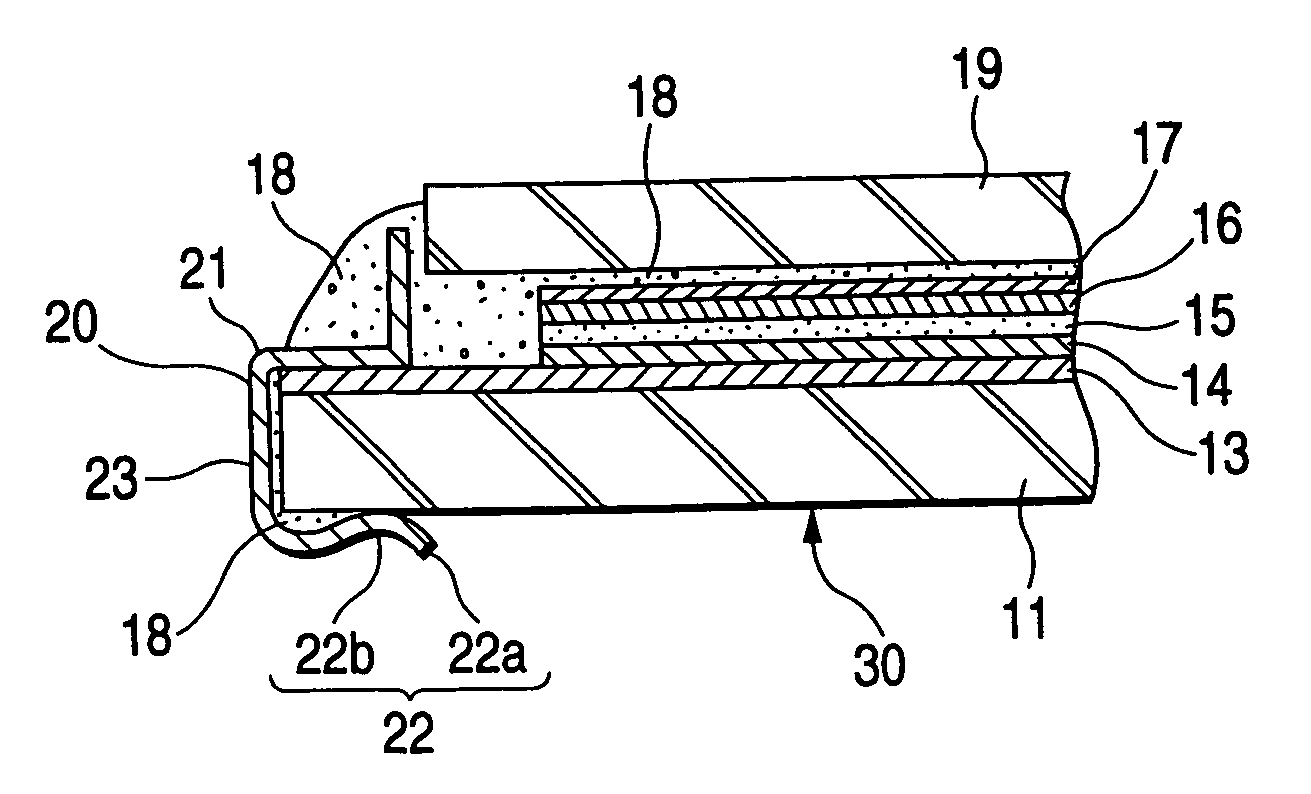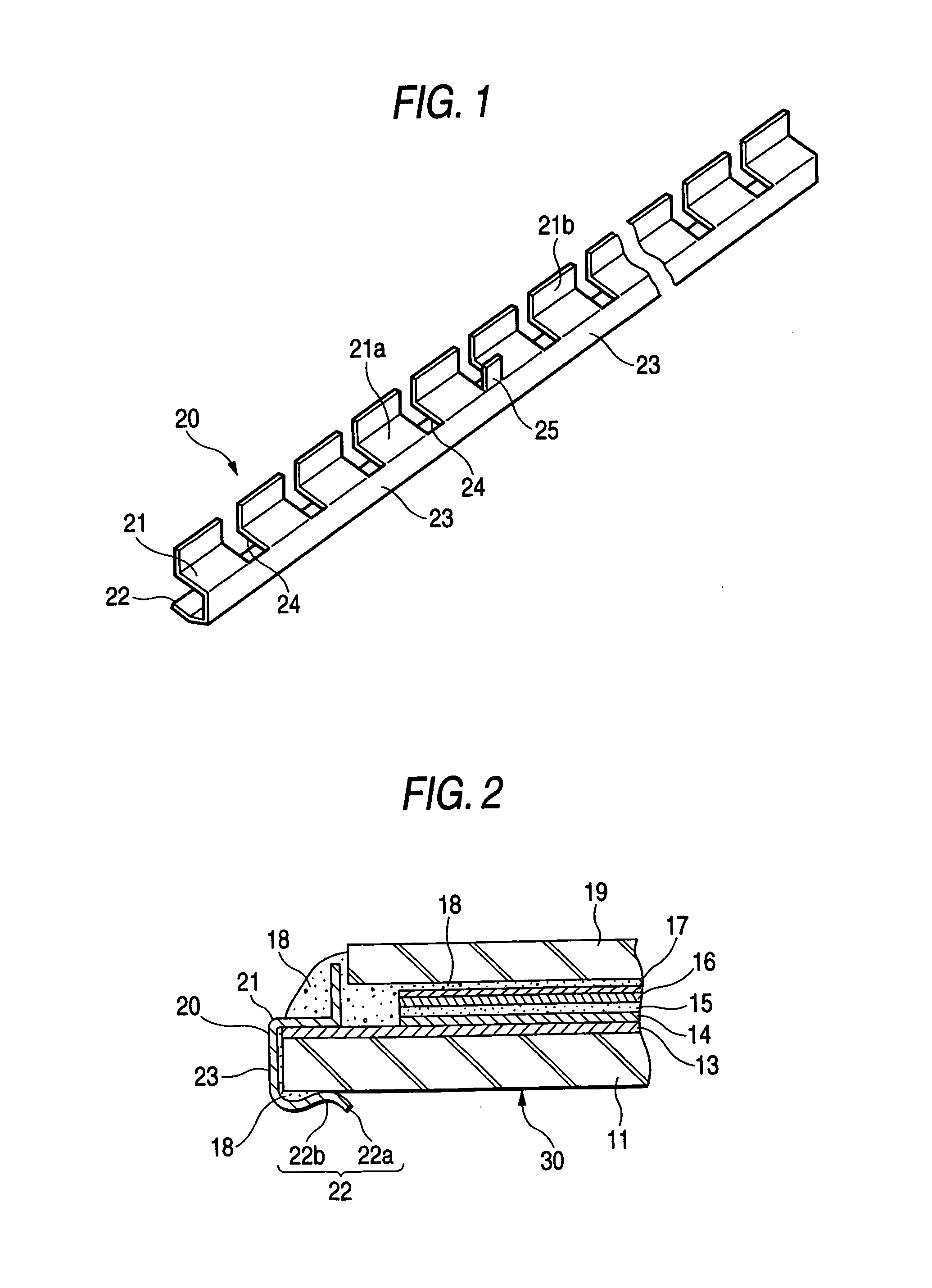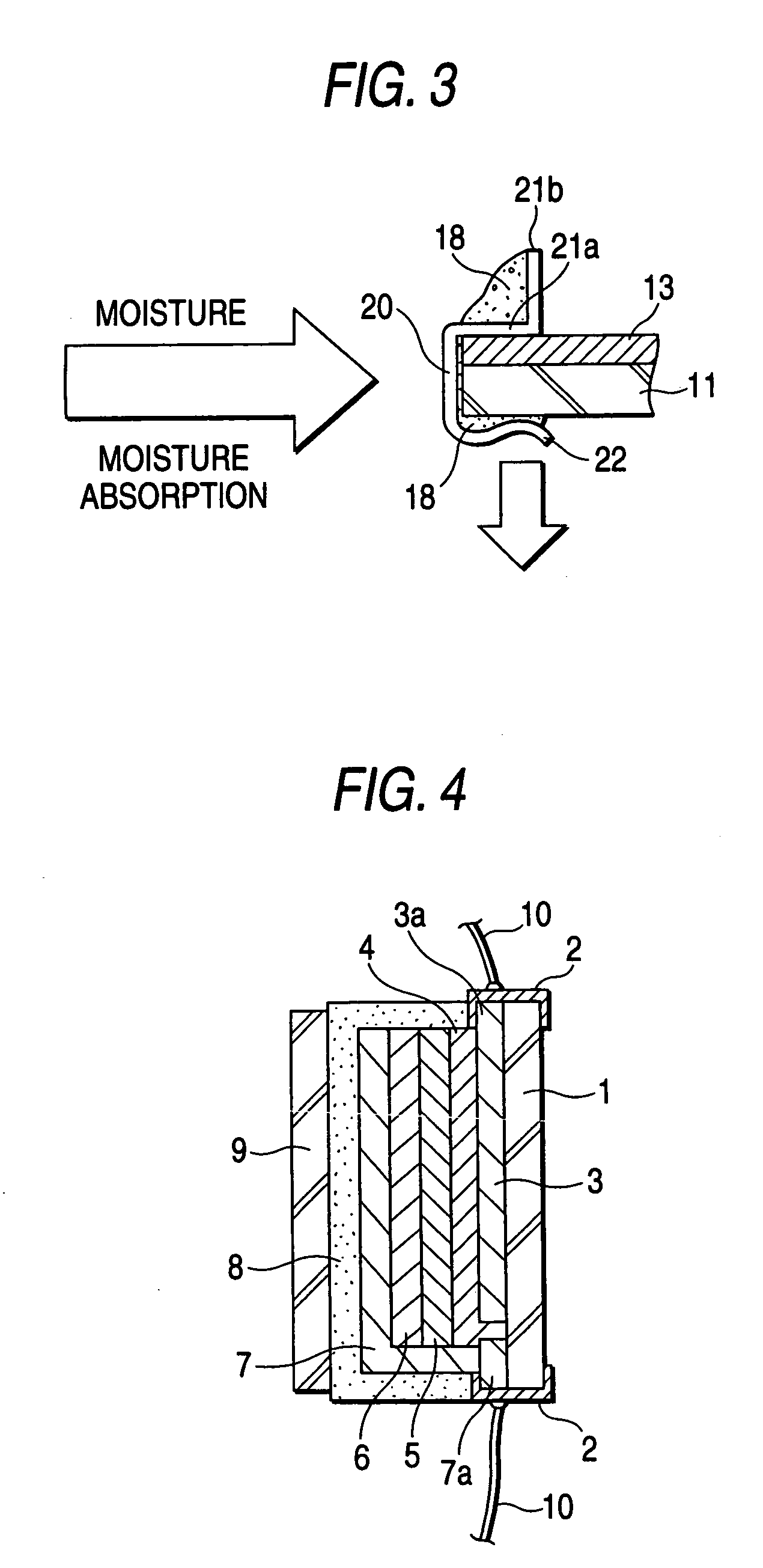Electrode structure of EC mirror
a technology of electrochromic mirrors and electrochromic plates, applied in the field of electrochromic mirror electrochromic plate electrochromic plate electrochromic plate electrochromic plate electrochromic plate electrochromic plate electrochromic plate electrochromic plate electrochromic plate electrochromic plate electrochromic plate electrochromic plate electrochromic plate electrochromic plate electrochromic plate electrochromic plate electrochromic plate electrochromic plate electrochromic plate electrochromic plate electrochromic plate electrochromic plate electro
- Summary
- Abstract
- Description
- Claims
- Application Information
AI Technical Summary
Benefits of technology
Problems solved by technology
Method used
Image
Examples
Embodiment Construction
[0022]An embodiment of the invention is described hereinbelow in more detail with reference to the accompanying drawings.
[0023]FIG. 1 is a perspective view illustrating an electrically conductive metallic clip 20. FIG. 2 is an enlarged sectional view illustrating an electrode portion of an EC mirror 30, to which the electrically conductive metallic clip is attached, and showing a state in which a lead-out (electrode) portion a substrate 11 is caught by the clip 20.
[0024]In FIG. 2, reference numeral 11 designates a transparent substrate constituted by a glass plate and so forth, and formed in a convex surface shape. Reference numeral 13 denotes a lower transparent electrically conductive film serving as a first electrode, which is formed on the top surface of the transparent substrate 11. For example, ITO or SnO2 is employed as the material of the film 13. Furthermore, a first coloring layer 14 made of IRTOF and so forth, a solid electrolyte layer 15, a second coloring layer 16 made ...
PUM
 Login to View More
Login to View More Abstract
Description
Claims
Application Information
 Login to View More
Login to View More - R&D
- Intellectual Property
- Life Sciences
- Materials
- Tech Scout
- Unparalleled Data Quality
- Higher Quality Content
- 60% Fewer Hallucinations
Browse by: Latest US Patents, China's latest patents, Technical Efficacy Thesaurus, Application Domain, Technology Topic, Popular Technical Reports.
© 2025 PatSnap. All rights reserved.Legal|Privacy policy|Modern Slavery Act Transparency Statement|Sitemap|About US| Contact US: help@patsnap.com



